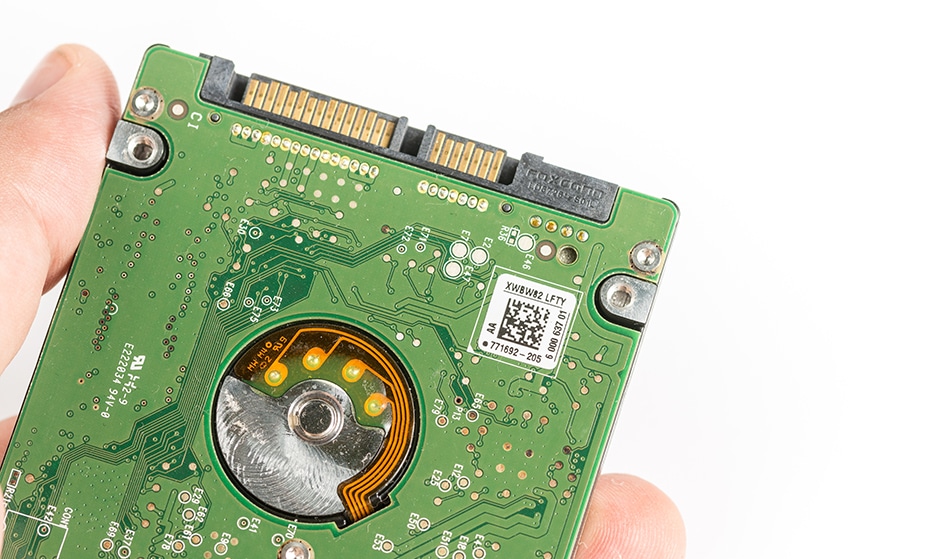With engineers looking to create computing devices made from smaller and smaller parts, quantum technology has become a promising research frontier. A new quantum sensor, able to measure miniscule magnetic fields could open the door to the next generation of hard discs, according to a new report from the Fraunhofer Institute for Applied Solid State Physics IAF in Germany.
Integrated circuitry is becoming ever more intricate. For instance, a typical Pentium processor has around 30 million transistors and magnetic structures on hard drives that are just 10 to 20 nanometres across; smaller than a flu virus. Computer engineering research is quickly approaching the world of quantum physics and scientists from the Fraunhofer Institute and the Max Planck Institute for Solid State Research have created a quantum sensor that will be capable of exactly measuring the magnetic fields expected to be used in the next generation of hard discs. The sensor uses a man-made diamond as a substrate and is just a little bigger than a nitrogen atom.
 MicrostockStudio/shutterstock
MicrostockStudio/shutterstock
In the last few decades, scientists at Fraunhofer IAF have established optimized systems for fabricating diamonds, which offer a number of advantages to quantum researchers. For instance, they can be converted into semiconductors when implanted with foreign atoms like phosphorus. Diamond is also the ideal material for use in optical circuits. Also, its impressive thermal conductivity allows for the rapid dissipation of heat.
Making the revolutionary quantum sensing unit calls for a very pure diamond. The crystal is converted into magnetic detector by either placing a single nitrogen atom into the incredibly fine tip, or adding nitrogen at the last phase of the diamond creation sequence. After that, the diamond tip is refined in oxygen plasma using an etching method. The ultimate outcome is an extremely fine diamond tip, similar to the tip of an atomic force microscope. The cornerstone to the whole design is the added nitrogen atom along with a nearby opening in the crystal structure.
This joint nitrogen-vacancy in the middle of the diamond operates as the sensor, giving off light after it is subjected to a laser and microwaves. If there is a magnet nearby, the sensor's emissions will vary - a phenomenon known as electron spin resonance spectroscopy.
Not only can this method identify magnetic fields with nanometre precision, it can also ascertain their power; two capabilities that open up a massive range of possibilities. For example, the small diamond tips can be used to keep track of hard drive quality, as hard drives are tightly packed and typically include small errors. The quantum sensor could spot defective information segments so that they are omitted from the disc reading and writing sequence. This cuts down on the defect rate, which is escalating as miniaturization continues. It also could lower production costs.
Because very weak magnetic fields can be found throughout nature, this tiny sensor could be applied to all kinds of research, including studies on the brain. Our brains are based on the movement of electrons and when electrons move, they generate a magnetic field.
Scientists want to pinpoint brain activity so they can figure out which regions of the brain are behind various functions or feelings. This can be accomplished directly by gauging brainwaves using electrodes, but, the outcomes for this method are very unreliable. Magnetic field measurements would offer far more useful outcomes. There are magnetic sensors in use currently, but they must be cooled with liquid nitrogen, which is a major disadvantage. Making use of the acute thermal conductivity of diamond, the new sensor can operate at room temperature without having to use cooling measures.
Disclaimer: The views expressed here are those of the author expressed in their private capacity and do not necessarily represent the views of AZoM.com Limited T/A AZoNetwork the owner and operator of this website. This disclaimer forms part of the Terms and conditions of use of this website.